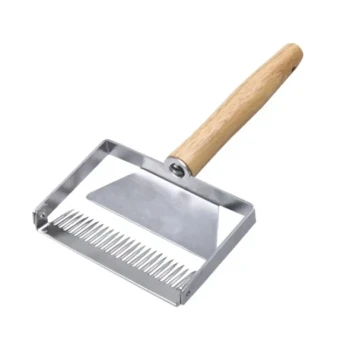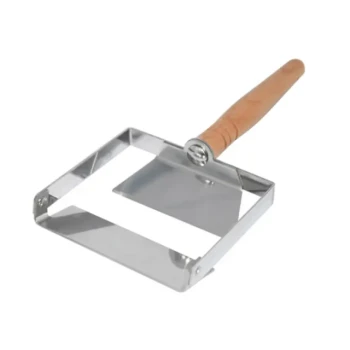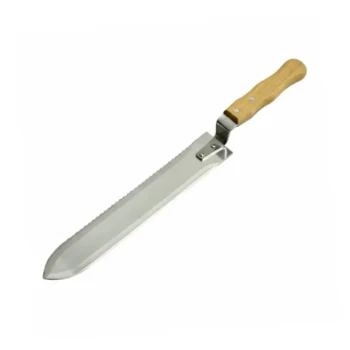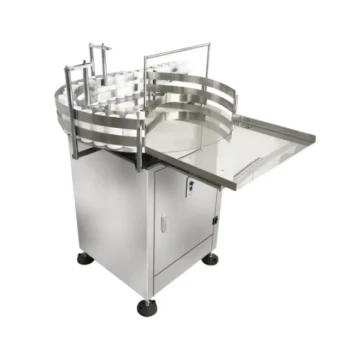For a small, hand-powered extractor, the act of spinning the honey out of 2 to 4 frames takes approximately 15 to 20 minutes. However, this is only one step in the entire honey harvest. The full process, from removing frames from the hive to cleaning up, is a multi-hour endeavor that requires careful planning and preparation.
While the mechanical extraction of honey is relatively quick, the total time commitment is dictated by the crucial, and often lengthy, steps of preparation, uncapping the frames, and post-harvest cleanup.
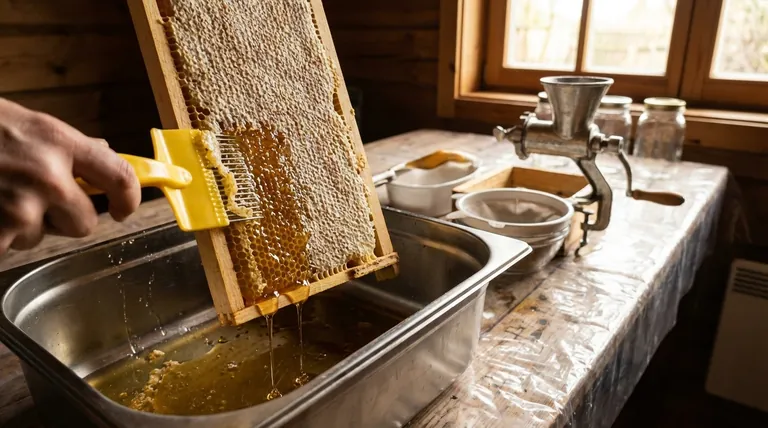
The Anatomy of a Honey Harvest: Beyond the Spin
The 20-minute extraction is the climax of a much larger operation. Understanding each stage is key to planning your time effectively and ensuring your honey is of the highest quality.
Step 1: Preparation is Non-Negotiable
Before you even approach the hive, your extraction space must be ready. This should be a clean, food-safe, indoor area.
Honey extraction is an inherently messy process. Protect your floors and surfaces from sticky spills in advance to save significant time on cleanup. Extracting outdoors is not an option, as it will quickly attract bees from all over the neighborhood.
Step 2: Selecting and Removing the Frames
The first critical decision is choosing the right frames. You must select frames that are fully capped with wax.
A complete wax capping is the bees' signal that the honey has the correct low moisture content (around 18%) to prevent fermentation and spoilage. Extracting uncapped "nectar" can ruin your entire batch.
Once selected, you must remove the bees from the frames using a bee brush or an escape board before placing the frames in a sealed box for transport to your extraction space.
Step 3: The Art of Uncapping
Uncapping is often the most time-consuming and meticulous part of the process. You must slice off the thin layer of wax cappings that seal the honey into the cells.
This is typically done with a heated knife or a specialized plane. A capping scratcher is then used to puncture any cells the knife missed. Remember, most frames have honey on both sides, and both must be fully uncapped.
Step 4: The Extraction
With the frames uncapped, they are placed in the extractor. The centrifugal force of spinning slings the honey out of the cells and onto the walls of the tank, where it pools at the bottom.
For those with foundationless frames, it is critical to start spinning slowly. This allows some honey to exit, lightening the comb and preventing the sheer weight of the honey from causing a "blowout" that destroys the wax structure.
Step 5: Post-Extraction Management
After the honey is filtered and bottled, you are left with "wet" frames coated in a thin layer of residual honey.
Do not store these frames as-is, as they will attract pests. The best practice for hobbyists is to place them back in the hive, a short distance from the colony. The bees will efficiently clean every last drop, leaving you with clean combs for the next season.
Understanding the Alternatives and Trade-offs
A centrifugal extractor is not the only way to harvest honey. The method you choose significantly impacts time, effort, and the final products you get.
The "Crush and Strain" Method
For beekeepers with only a few hives or those using foundationless frames, the crush and strain method is highly practical.
This involves crushing the entire comb and letting the honey drain through a series of filters. It requires no specialized equipment but does destroy the drawn-out comb. A key benefit is that it allows you to easily harvest the clean beeswax as a separate product.
The Flow Hive System
Flow Frames represent a completely different approach. This patented system allows for honey harvesting directly from the hive without removing any frames.
By turning a handle, the cells within the frame split, creating channels for the honey to drain out into a collection trough. This method virtually eliminates the time spent on uncapping, extraction, and major cleanup, turning the harvest into a much simpler task.
Making the Right Choice for Your Harvest
Your approach to extraction should align with your scale, equipment, and goals for the season.
- If your primary focus is a small-scale, low-equipment harvest: The crush and strain method is your most practical option, and it yields valuable beeswax.
- If your primary focus is processing a moderate number of frames efficiently: A hand-crank extractor is the standard choice, but budget most of your time for preparation and uncapping, not the spinning itself.
- If your primary focus is minimizing labor and hive disruption: The Flow Hive system is explicitly designed to make extraction a simple, on-demand task.
Proper planning transforms honey extraction from a daunting, sticky chore into the profoundly rewarding culmination of your beekeeping season.
Summary Table:
| Step | Typical Time Commitment | Key Consideration |
|---|---|---|
| Preparation & Uncapping | 1-2+ hours (most time-consuming) | Requires a clean, indoor space and meticulous work. |
| Spinning (Extraction) | 15-20 minutes for 2-4 frames | Speed depends on extractor type (hand-crank vs. electric). |
| Filtering, Bottling & Cleanup | 30-60 minutes | Essential for a pure final product and pest prevention. |
| Total Estimated Time | 2-4 hours for a small batch | Varies greatly with scale, method, and experience. |
Ready to Streamline Your Honey Harvest?
Whether you're a commercial apiary managing hundreds of hives or a distributor supplying beekeeping equipment, efficiency is key. HONESTBEE supplies the durable, high-performance extractors and tools you need to maximize your harvest.
We help you:
- Scale Up: From hand-crank to commercial-grade electric extractors.
- Save Time: With efficient uncapping knives, strainers, and bottling equipment.
- Protect Your Investment: With reliable supplies that ensure honey quality and comb longevity.
Let's discuss your specific needs. Contact our wholesale team today to get the right equipment for your operation.
Visual Guide
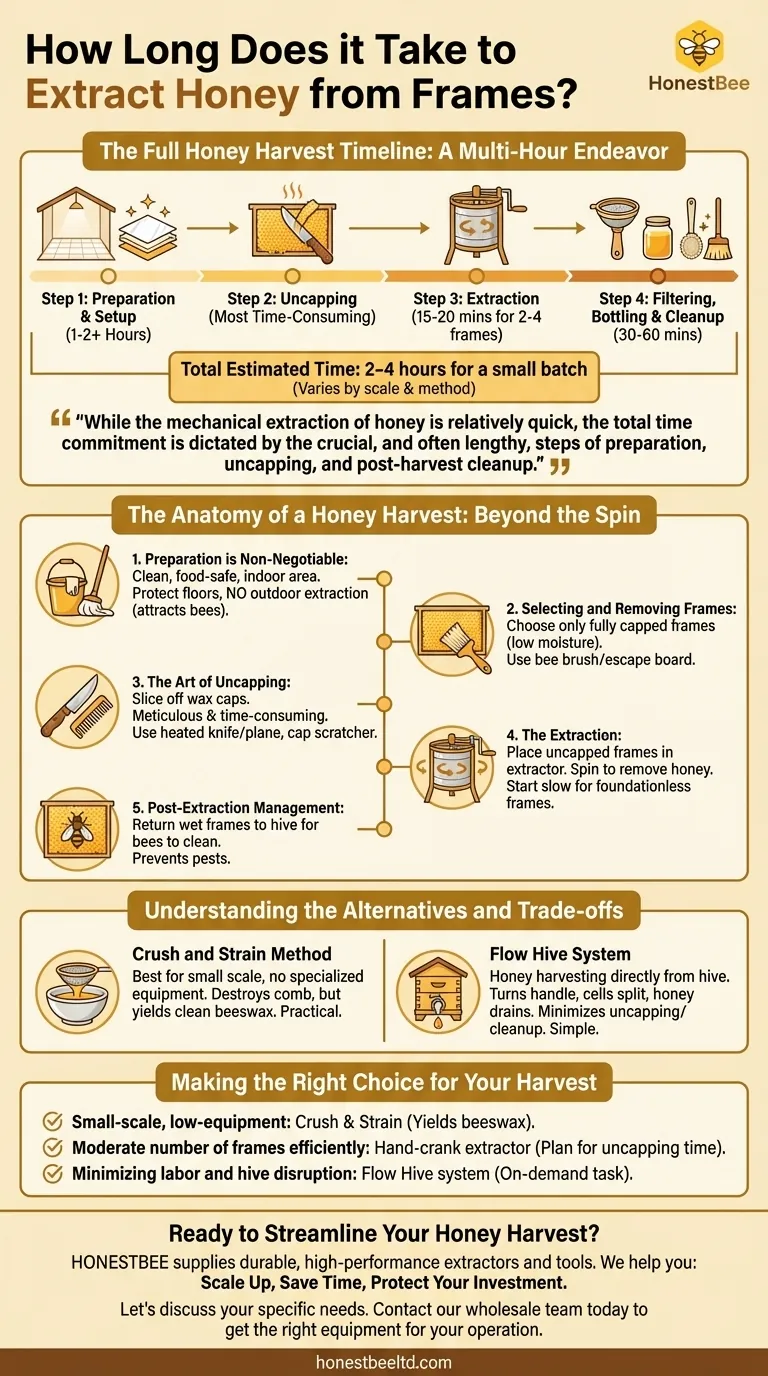
Related Products
- Professional Durable Plastic Handle Honey Uncapping Fork
- Extra-Wide All-Stainless Steel Honey Uncapping Fork with T-Handle
- Professional Extra-Wide Uncapping Fork with Bent Tines for Beekeeping
- Extra Wide Stainless Steel Honey Uncapping Fork with Scraper Beekeeping Tool
- 8-Frame Electric Self-Reversing Honey Extractor Spinner for Commercial Honey Extraction Equipment
People Also Ask
- What are the main parts of a honey extractor? A Guide to Efficient Honey Harvesting
- What tools can be used to remove the beeswax capping? Choose the Right Tool for Your Harvest
- What is the use of a bee knife? Essential for Efficient Honey Harvesting
- What is the use of an uncapping knife? Essential for a Clean & Efficient Honey Harvest
- What is the overall recommendation for beginner beekeepers regarding uncapping tools? Master Your First Honey Harvest



